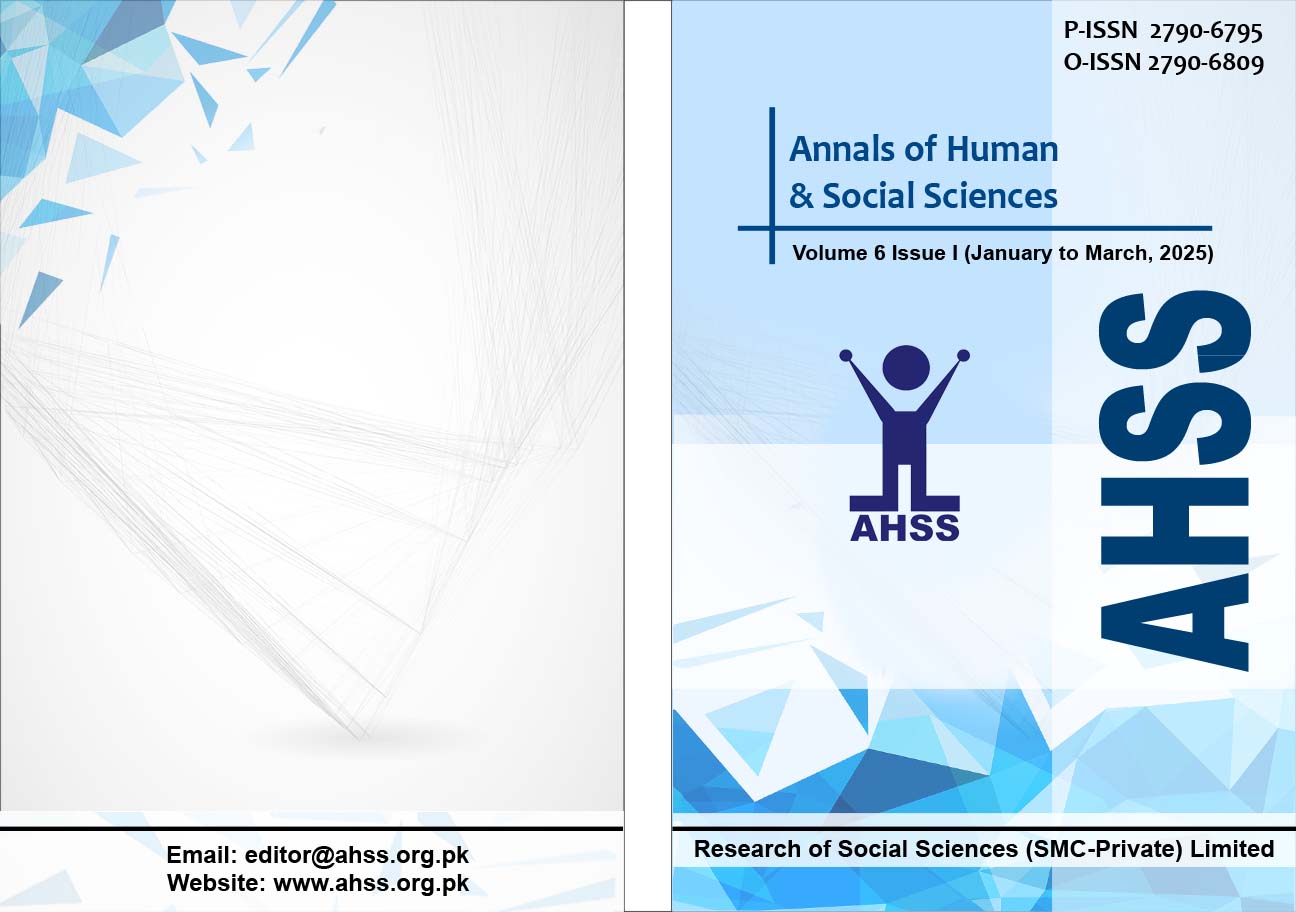Global Governance in the Context of BRI and CPEC: Heritage Challenges and Opportunities in Pakistan
DOI:
https://doi.org/10.35484/ahss.2025(6-I)41Keywords:
Heritage, BRI, CPEC, Islam, Buddhism, Hinduism, Sikhism, TourismAbstract
This study underscores the importance of Pakistan’s religio-cultural heritage, highlighting its historical legacy of pluralism, tolerance, and coexistence. It asserts that Pakistan’s rich tangible heritage deserves greater global recognition. Pakistan’s diverse religious traditions—spanning Islam, Hinduism, Sikhism, Buddhism, and Christianity—present a significant opportunity for faith-based tourism. With 120 out of 480 tourist destinations being religious sites, the country’s growing appeal is evident in its rise on the International Travel and Tourism Development Index, climbing from 89th in 2019 to 83rd in 2021. Collaborative Opportunities: By examining key religious sites and past partnerships, this study explores ways to strengthen cultural ties and advance global heritage tourism. China’s Global Civilization Initiative promotes cross-cultural dialogue, fostering international harmony. This research adopts a social history approach, employing historical methodology that relies on primary and secondary sources to reconstruct and analyze the socio-cultural past. Pakistan, with its untapped potential in religious tourism, stands to benefit significantly from Chinese tourist interest. As China invests in human capital and cultural exchange, this research investigates how the Belt and Road Initiative (BRI) and the China-Pakistan Economic Corridor (CPEC) can boost religio-cultural tourism in Pakistan. By identifying challenges and opportunities, the study emphasizes how tourism development can spur economic growth while enhancing Pakistan’s global image. This research adopts a social history approach, employing historical methodology that relies on primary and secondary sources to reconstruct and analyze the socio-cultural past. While substantial scholarly attention has been devoted to analyzing CPEC's economic, infrastructural, and political dimensions, its sociocultural implications - particularly in the realm of religious tourism - have received comparatively limited examination. This study seeks to address this scholarly gap by offering a critical intervention in the existing historiography.
Downloads
Published
Details
-
Abstract Views: 403
PDF Downloads: 250
How to Cite
Issue
Section
License
Copyright (c) 2025 Annals of Human and Social Sciences

This work is licensed under a Creative Commons Attribution-NonCommercial 4.0 International License.

RESEARCH OF SOCIAL SCIENCES (SMC-PRIVATE) LIMITED(ROSS) & Annals of Human and Social Sciences (AHSS) adheres to Creative Commons Attribution-Non Commercial 4.0 International License. The authors submitting and publishing in AHSS agree to the copyright policy under creative common license 4.0 (Attribution-Non Commercial 4.0 International license). Under this license, the authors published in AHSS retain the copyright including publishing rights of their scholarly work and agree to let others remix, tweak, and build upon their work non-commercially. All other authors using the content of AHSS are required to cite author(s) and publisher in their work. Therefore, RESEARCH OF SOCIAL SCIENCES (SMC-PRIVATE) LIMITED(ROSS) & Annals of Human and Social Sciences (AHSS) follow an Open Access Policy for copyright and licensing.






